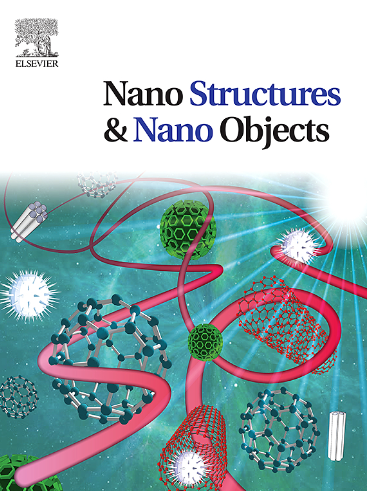Utilizing the lanolin of kangal-akkaraman sheep breed wool from Sivas-Zara area for silver nanoparticles synthesis and their multifaceted applications
IF 5.45
Q1 Physics and Astronomy
引用次数: 0
Abstract
The purpose of this study is to investigate a sustainable and eco-friendly method of producing silver nanoparticles in the Sivas-Zara area by utilizing lanolin, a naturally occurring material that is taken from sheep wool. This study was driven by the antioxidant, antibacterial, and photocatalytic qualities of lanolin, which may have uses in cosmetics and environmental remedies. The findings demonstrate that Ultraviolet Visible Spectroscopy and Fourier Transform Infrared Spectroscopy spectroscopy were used to successfully produce and analyze silver nanoparticles. The antibacterial activity was evaluated against Staphylococcus aureus and Escherichia coli, and the antioxidant qualities were confirmed using the Folin-Ciocalteu assay. Furthermore, the methylene blue dye was efficiently degraded by photocatalysis, reducing absorbance by 79.92% in just 24 minutes. To sum up, our study shows that lanolin is a good reducing agent for making AgNPs, which have potent antioxidant, antibacterial and photocatalytic properties.
利用Sivas-Zara地区kangal-akkaraman羊品种羊毛的羊毛脂合成纳米银颗粒及其多方面应用
本研究的目的是研究一种在西瓦斯-扎拉地区利用羊毛脂(一种从羊毛中提取的天然材料)生产纳米银的可持续和环保方法。这项研究是由羊毛脂的抗氧化、抗菌和光催化特性推动的,羊毛脂可能在化妆品和环境补救中有用途。研究结果表明,紫外可见光谱和傅里叶变换红外光谱技术可以成功地制备和分析纳米银。对金黄色葡萄球菌和大肠杆菌进行了抑菌活性评价,并采用Folin-Ciocalteu法对其抗氧化性能进行了验证。此外,亚甲基蓝染料在光催化下被有效降解,在24分钟内吸光度降低79.92%。综上所述,羊毛脂是制备AgNPs的良好还原剂,具有较强的抗氧化、抗菌和光催化性能。
本文章由计算机程序翻译,如有差异,请以英文原文为准。
求助全文
约1分钟内获得全文
求助全文
来源期刊

Nano-Structures & Nano-Objects
Physics and Astronomy-Condensed Matter Physics
CiteScore
9.20
自引率
0.00%
发文量
60
审稿时长
22 days
期刊介绍:
Nano-Structures & Nano-Objects is a new journal devoted to all aspects of the synthesis and the properties of this new flourishing domain. The journal is devoted to novel architectures at the nano-level with an emphasis on new synthesis and characterization methods. The journal is focused on the objects rather than on their applications. However, the research for new applications of original nano-structures & nano-objects in various fields such as nano-electronics, energy conversion, catalysis, drug delivery and nano-medicine is also welcome. The scope of Nano-Structures & Nano-Objects involves: -Metal and alloy nanoparticles with complex nanostructures such as shape control, core-shell and dumbells -Oxide nanoparticles and nanostructures, with complex oxide/metal, oxide/surface and oxide /organic interfaces -Inorganic semi-conducting nanoparticles (quantum dots) with an emphasis on new phases, structures, shapes and complexity -Nanostructures involving molecular inorganic species such as nanoparticles of coordination compounds, molecular magnets, spin transition nanoparticles etc. or organic nano-objects, in particular for molecular electronics -Nanostructured materials such as nano-MOFs and nano-zeolites -Hetero-junctions between molecules and nano-objects, between different nano-objects & nanostructures or between nano-objects & nanostructures and surfaces -Methods of characterization specific of the nano size or adapted for the nano size such as X-ray and neutron scattering, light scattering, NMR, Raman, Plasmonics, near field microscopies, various TEM and SEM techniques, magnetic studies, etc .
 求助内容:
求助内容: 应助结果提醒方式:
应助结果提醒方式:


